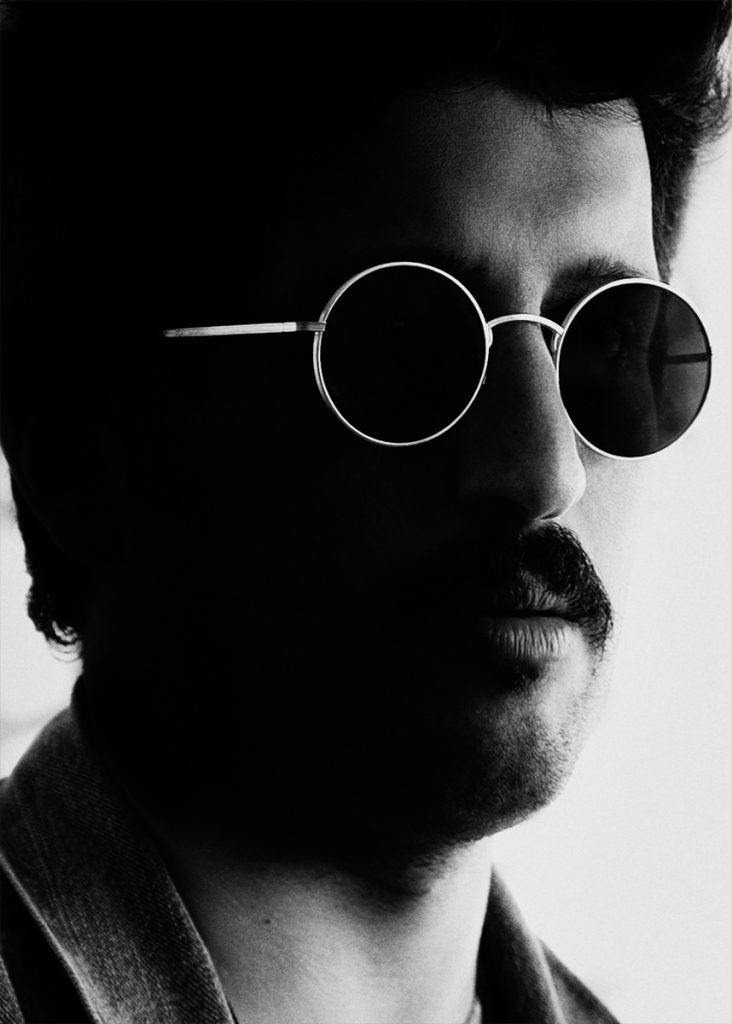Portrait Photography: Capturing the Essence of Identity and Personality

Unlocking the Art of Portrait Photography
Portrait photography serves as a powerful medium for expressing the essence of identity and personality. By focusing on the subject’s unique traits, photographers are able to tell compelling stories that resonate on a deeper level. This art form is not merely about capturing a face; it’s about unveiling the soul within.
Why Portrait Photography Matters
- Emotional Connection: A well-executed portrait can evoke a myriad of emotions, ranging from joy to nostalgia. For instance, a candid shot of a child laughing can create a sense of warmth and innocence, connecting viewers to their own childhood memories.
- Storytelling: Each image has the potential to narrate a personal journey. For example, a portrait of an elderly person might include elements that reflect their life experiences, such as clothing that speaks to a specific era, or backgrounds that convey their personal history.
- Cultural Reflection: Portraits often mirror societal changes and cultural narratives. Consider how portraits from the Civil Rights Movement provide crucial insights into the struggles and triumphs of that era, highlighting the artist’s role in chronicling history through their lens.
In the United States, portrait photography has evolved dramatically over the years, influenced by diverse cultures and technological advancements. From traditional studio setups to spontaneous street portraits, styles can vary widely. Each approach allows for a different interpretation of identity, capturing nuances that reflect individual experiences. Renowned photographers such as Annie Leibovitz and Richard Avedon have pushed boundaries, creating portraits that hold significant cultural weight and challenge conventional norms.
The Elements of a Compelling Portrait
- Lighting: Lighting can dramatically alter the mood of a portrait. Soft, diffused light can create an ethereal feel, while harsh shadows can add drama. Photographers often refer to “golden hour” — shortly after sunrise or before sunset — as the perfect time for capturing crisp portraits.
- Composition: Effective composition guides the viewer’s eye to the subject. Techniques such as the rule of thirds, leading lines, or framing can enhance the visual storytelling of a portrait, making it engaging from every angle.
- Context: The setting of a portrait can provide significant insight into the subject’s life and personality. For instance, a portrait taken in a bustling city street can reveal the subject’s vibrant lifestyle, while a serene nature backdrop might signify tranquility and connection to the outdoors.
As we dive into the world of portrait photography, we uncover not just techniques, but also the underlying principles that govern this timeless art. By exploring the balance of technical skills and emotional depth, one can appreciate how portrait photography truly captures the human experience. Each click of the shutter not only freezes a moment in time but also invites viewers to embark on a journey of empathy and understanding, making portrait photography a vital art form in our society. Understanding and mastering these elements can elevate a photographer from simply capturing images to creating evocative pieces that speak to the viewer’s heart and mind.
DIVE DEEPER: Click here to learn more about the evolution of sculpture
The Journey of Portrait Photography
To truly understand the depth of portrait photography, we must explore its evolution and impact on how we perceive identity and personality. This genre of photography goes beyond the technical aspects of capturing a subject; it is an intricate blend of artistry and psychology, where the photographer becomes a storyteller, revealing the layers that make up a person’s character. The essence of this craft lies in the photographer’s ability to create a connection with the subject, allowing unfiltered expressions and emotions to surface.

An Artistic Lens on Identity
Every individual carries a unique story — encompassing experiences, culture, and personal milestones. In this context, portrait photography acts as a visual narrative, employing various techniques and styles to highlight these distinct traits. Below are key facets that frame the artistry of capturing identity:
- Emotion and Expression: The subtleties in facial expressions and body language are paramount. A photograph that captures a candid moment can reveal genuine emotions, while posed portraits can suggest different aspects of a person’s persona. The challenge lies in finding that perfect balance that captures both the expected and the authentic.
- Uniqueness of Style: Every photographer has a distinctive style that shapes their work. Some may favor high-contrast images that evoke intensity and drama, while others may prefer softer, muted tones that create a sense of intimacy. This choice in style plays a significant role in how the subject’s identity is portrayed.
- Connection with the Subject: Establishing a rapport with the subject is essential. When a photographer makes their subject comfortable, it encourages them to showcase their personality more fully. Techniques such as engaging conversation or sharing personal anecdotes can help bridge this gap, resulting in more relatable and engaging portraits.
The role of context cannot be understated in the realm of portrait photography. The surroundings chosen for a shoot — whether it be the vibrant chaos of an urban landscape or the calming embrace of nature — impart additional layers to the narrative. For example, a portrait taken in a café bustling with life can juxtapose the solitary expression of the subject, inviting viewers to ponder their thoughts and experiences within that moment. Alternatively, a serene background could symbolize peace and introspection, imbuing the portrait with a sense of calmness.
Technological Advances and Portraiture
As we delve into the realm of portrait photography, we can’t ignore the impact of technological advancements. The transition from film to digital photography has not only made the art more accessible but has also expanded the potential for creativity. With digital editing software, photographers can manipulate images to enhance colors, remove distractions, and perfect lighting. This flexibility encourages artists to explore new realms of expression, pushing the boundaries of traditional portrait photography.
As viewers and aspiring photographers alike explore the rich landscape of portrait photography, they are reminded that it is a deep engagement in the nuances of human connection. The art of creating portraits that resonate with authenticity and personality is not just a skill—it’s a journey of understanding humanity itself, urging us to reflect on the stories etched within each individual we encounter.
Exploring the Impact of Portrait Photography
Portrait photography is not merely an art; it’s a compelling way to convey identity and personality. This genre of photography allows us to capture more than just a person’s physical appearance; it encapsulates their spirit, emotions, and essence. Often described as visual storytelling, portrait photography connects viewers with subjects, creating an emotional dialogue that transcends words.
Through careful composition, lighting, and technique, photographers can highlight unique characteristics that define an individual. Choosing the right setting enhances this experience, making it pivotal to communicate the subject’s lifestyle or passions. For instance, a musician might be photographed with their instruments, while an athlete might be captured in motion, adding layers to the portrayal of identity.
Moreover, post-processing techniques offer further creative latitude. Adjustments in color grading and retouching can evoke a particular mood or narrative, helping articulate the subject’s personality in a more profound way. As a result, portrait photography transcends surface aesthetics, becoming a powerful medium for personal expression and connection.
Additionally, the psychology behind portrait photography plays a significant role. It encourages subjects to reflect on their identity, often leading to moments of vulnerability and genuine expression. This process is not just about capturing a face; it’s about documenting a moment in time that embodies who a person is and what they represent. By focusing on these intrinsic qualities, photographers contribute to a broader understanding of the human experience.
| Category | Description |
|---|---|
| Connection | Portrait photography fosters a sense of connection between the subject and the audience, deepening the viewer’s understanding of the individual. |
| Expression | This art form allows subjects to express their emotions and identity, creating candid moments that capture the essence of who they are. |
In summary, portrait photography is an essential tool for understanding identity and personality. It not only highlights the uniqueness of individuals but also reflects broader societal narratives. The underlying techniques and emotional nuances elevate the field, making it a vital component of visual arts.
DIVE DEEPER: Click here to discover essential techniques and materials
The Intersection of Culture and Portrait Photography
Cultural context plays a pivotal role in portrait photography, influencing not only how subjects are perceived but also how they present themselves. Different cultures celebrate distinct values, traditions, and aesthetics that inform how identity is expressed through visual representation. For instance, in African cultures, vibrant colors and bold patterns in clothing can symbolize heritage and community ties. These elements transcend mere fashion; they serve to tell a story about lineage and cultural identity. Photographers who respect and understand these nuances can create images that resonate deeply with both the subjects and the viewers, fostering a sense of belonging and pride.
Inclusivity in Portrait Photography
In recent years, there has been a growing emphasis on inclusivity and representation within the realm of portrait photography. Movements advocating for diversity have motivated photographers to expand their portfolios to include a broader spectrum of identities, such as gender nonconformity, different body types, and various cultural backgrounds. This approach not only democratizes the medium but also lays the groundwork for a more comprehensive understanding of identity.
By showcasing a diverse array of subjects, photographers are contributing to a shifting narrative that challenges traditional ideals of beauty and representation. For example, the work of artists like Kadra Askar and Yasmin Albatoul highlights voices that have historically been sidelined. Through their lenses, they provide opportunities for subjects to tell their stories, thus enriching the cultural tapestry of portrait photography.
The Power of Storytelling through Portraits
One of the most compelling aspects of portrait photography is its ability to tell stories — not only of the subjects but also of the world surrounding them. Portraits that incorporate environmental elements can amplify a narrative’s depth. For instance, a photograph featuring a musician in their bustling cityscape not only showcases the individual but reflects the vibrant artistic community that shapes their identity.
Storytelling in portrait photography extends beyond composition; the photographer’s intent plays a significant role. A portrait captured with the aim of highlighting societal issues can provoke thought and inspire change. For instance, contemporary photographers like Hannah Cohen often focus on social justice themes, using their work to immerse viewers in the realities faced by marginalized communities. This engagement can challenge viewers to reconsider perceptions, fostering empathy and understanding.
Beyond the Frame: The Role of Personal Stories
Moreover, the subjects themselves bring invaluable stories that add layers of complexity to a portrait. An elderly individual’s weathered face may convey resilience, while a young child’s joyful smile might embody hope and innocence. These narratives become intertwined with the images, inviting onlookers to form their interpretations.
Engaging with subjects is crucial, as building trust can unveil layers of the identity that might not otherwise be visible. Effective portrait photographers often conduct pre-shoot conversations to learn about their subjects’ backgrounds, aspirations, and challenges. This exploration aids in crafting a visual narrative that is both authentic and powerful, ultimately culminating in an impactful portrait that transcends the surface.
In essence, the interplay of culture, inclusivity, and personal storytelling culminates in a multifaceted world of portrait photography. As artists and viewers traverse this dynamic landscape, the call to reflect on identity and personality becomes an invitation to delve deeper into the rich human experience.
DIVE DEEPER: Click here to uncover the emotions behind colors
Conclusion
In conclusion, portrait photography serves as a powerful medium for exploring and expressing the intricate tapestry of identity and personality. By weaving together cultural narratives, personal stories, and an inclusive approach, photographers can transcend the mere act of taking a picture. Instead, they engage in a dialogue that captures the essence of their subjects, inviting viewers to see beyond the surface and into the rich complexities of human experience.
The growing emphasis on diversity within portrait photography not only enriches the visual landscape but also compels us to confront societal norms surrounding beauty and representation. As contemporary artists leave behind traditional parameters, they usher in a new era where every face tells a story that deserves to be heard and celebrated. This shift is pivotal in fostering a greater understanding and appreciation for the vast spectrum of identities that make up our world.
Ultimately, the art of portrait photography transcends individual personas; it reflects the collective essence of humanity. By capturing candid moments, incorporating meaningful environmental elements, and valuing personal narratives, photographers enhance our understanding of various cultures and social dynamics. As we delve deeper into this art form, we are encouraged to embrace the diverse stories that define us, turning each portrait into a testament of creativity, resilience, and community.



